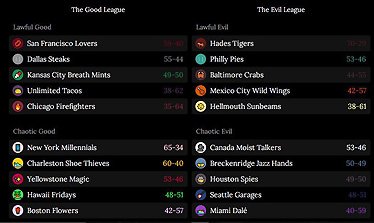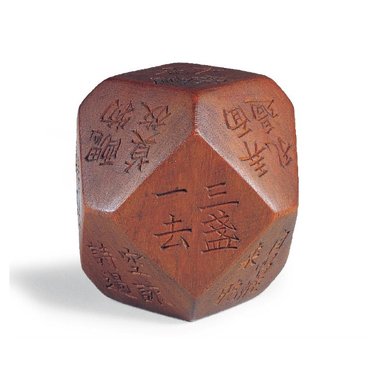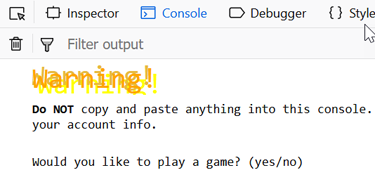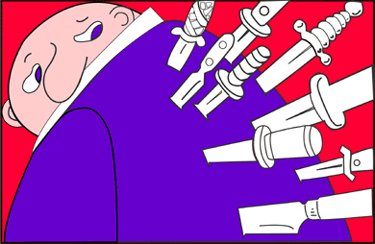Category Archive 'Games'
10 Oct 2021


Atlas Obscura:
If you sail to the island of Sanday in the Orkney archipelago in northern Scotland, you’ll see the silhouettes of neighboring islands on the horizon. Upon arrival you’ll see white, sandy beaches that trail into rough, once-agricultural terrain, and experience its erratic weather—sun then fog then rain then clear skies all in the same day. Nestled there, on a shallow cliff, is a mound of earth and rocks: a prehistoric tomb dating to around 3500 B.C.
The tomb sits on a low-lying peninsula, where growing storms and agitated seas are eroding it away. So, in August and September 2021, a group of archaeologists made their way there, to Tresness, the site of that lone Neolithic tomb, with their sights set on excavation. The research team was anxious to study the tomb before it was lost; it contains a single chamber, presumably for someone important.
“What we discovered was an exceptionally well-preserved monument,” says Hugo Anderson-Whymark, a curator of prehistory at National Museums Scotland who co-led the research. There were no remains, but inside the monument were a couple rare finds: two polished stone balls, each about the size of a tennis ball.
The other leading archaeologist of the excavations, Vicki Cummings of the University of Central Lancashire, unearthed both of the orbs herself. With the first, she remembers pulling her trowel back and immediately noticing that something was different. “It was really exciting,” she says. “I said after the first one, ‘I’ll never find anything like that ever again in my career,’ and then I found another one. It’s very rare that you would find two such amazing objects, it was incredible.”
But these two balls aren’t exactly a unique find—they’re part of a widely distributed mystery left by the Neolithic inhabitants of the British Isles. More than 500 stone balls like them have been discovered to date. For centuries, no one paid them much attention. Farmers or builders would randomly discover them in fields, and then either keep them or donate them without another thought. It wasn’t until archaeologist Sir Daniel Wilson published illustrations of the orbs in 1851 that people began to take notice. “Suddenly you saw, from 1850 onwards, lots of them coming out the woodwork,” says Anderson-Whymark. “There were about 100 known by the early 20th century.” But because of the way that many of them were found—without archaeological context—scholars didn’t know where most came from. That’s why Cummings was so floored by what she found. Discovering not one but two, in their original location in a tomb, is incredible—only a few have ever been found in their original context. Also, most of the 20 balls that have been found in the Orkney Islands are carved and etched with patterns and designs. These, on the other hand, were polished smooth.
RTWT
Clearly, those Neolithic fellows played some game of the Boules family resembling Lawn Bowls, Raffe, Boules, Bocce, or Péntaque.
11 Aug 2020


Pennsylvanians all tend to be addicted to the high quality pastry products of Philadelphia’s Tastycake Baking Company. Tastycake pies are, in particular, renowned for their long keeping and their role as the perfect universal iron ration. You can eat them for breakfast, lunch, or dinner.
Now, what do you know? the Inquirer reports that Tastycake Pies are the mascot of a blaseball team.
While pro sports are getting back underway (Go Flyers!), Philadelphia already has a team that’s won two championships this year — and they did it with a three-headed dog for a catcher, a third baseman who’s actually seven gnomes in a single uniform, and a starting pitcher who “was cloned from a Cretaceous Period trombone preserved in amber found in a Peruvian mine.â€
The Pies — who play for their “flans†in Tastykake Stadium (aka “The Ovenâ€) under the direction of Coach Hoagie Schuylkill — are the first back-to-back champions of Internet League Blaseball, which is a weeks-old “absurdist, player-driven, corruptible, online game of baseball,†according to creators Sam Rosenthal, Joel Clark, and Stephen Bell of The Game Band, a Los Angeles-based video game studio. The team answered questions via email from The Inquirer.
Games among the 20 teams in the league, like the Canada Moist Talkers and the Breckenridge Jazz Hands, are simulated on the hour every hour by a program that writes out every play as it happens on a game log on the score board (â€Kennedy Cena hits a Single!â€).
Each regular season starts on Monday and ends Friday, with the postseason on Saturday. The Pies won the first two seasons, making them not only the first team to win Blaseball but also the first team to win back-to-back championships. But last season (i.e., last week) the Pies just couldn’t slice it and they were beaten out in the semifinals by the Hades Tigers.
In a Dungeons & Dragons-like twist to the game, it’s the Blaseball fans who choose a team to support and then create the lore surrounding that team and its players using Discord (a group-chatting platform), Blaseball Wikipedia fan pages, and social media.
“The key difference between Blaseball and baseball is player participation. Gambling is allowed and encouraged. Players will earn and lose virtual Blaseball currency by placing bets on games, and they’ll cash in earnings to make changes to the league,†Rosenthal said. “The teams, the players on the team, the rosters, and even the rules of the game can be changed by the community.â€
RTWT

HT: JWB.
06 Jul 2020

This 14-sided dice was made for drinking games, and is carved with instructions on each side:
兩盞則放: Drink two cups immediately
三盞一去: Drink three cups at once
衆人打鼻: Let everybody hit you on the nose
飮盡大笑: Drink a big cup and laugh loudly
醜物莫放: Drink from a cup with something gross in it
ç¦è²ä½œèˆž: Do a dance without music
曲臂則盡: Drink while linking arms with a buddy
ç©ºè© è©©éŽ: Recite a verse from a poem
自唱自飮: Drink and sing a song
自唱怪來晩: Sing the song Goeraeman
月é¡ä¸€æ›²: Sing the song Weolgyeong
ä»»æ„è«‹æŒ: Ask a buddy to sing a song
有犯空éŽ: Hold still and don’t flinch while someone pretends to hit you
弄é¢å”éŽ: Hold still and don’t flinch while someone tickles your face
28 Jun 2019


These were sold last year for $1650 each.
Forbes tells us all about Star Citizen, a video game that attracted $300 million in Crowd-Funding, but still may never be completed.
It’s October 2018 and 2,000 video game fanatics are jammed into Austin’s Long Center for the Performing Arts to get a glimpse of Star Citizen, the sprawling online multiplayer game being made by legendary designer Chris Roberts. Most of the people here helped to pay for the game’s development—on average, $200 each, although some backers have given thousands. An epic sci-fi fantasy, Star Citizen was supposed to be finished in 2014. But after seven years of work, no one—least of all Roberts—has a clue as to when it will be done. But despite the disappointments and delays, this crowd is cheering for Roberts. They roar as the 50-year-old Englishman jumps onto the stage and a big screen lights up with the latest test version of Star Citizen.
The demo starts small: Seeing through the eyes of the in-game character, the player wakes up in his living quarters, gets up and brews a cup of coffee. Applause quickly turns to laughter when the game promptly crashes. While his underlings scramble to get the demo running again, a practiced Roberts smoothly fills minutes of dead air by screening a commercial for the Kraken, a massive war machine spaceship. Eventually the Kraken, like all the starships that Roberts sells, will be playable in Star Citizen. At least that’s the hope. But for $1,650 it could be yours, right away.
“Some days, I wish I could be like . . . ‘You’re not going to see anything until it’s beautiful,’ †Roberts later says at his Los Angeles studio. “A lot of times we’ll show stuff and literally say, ‘Now, this is rough.’ â€
What’s really rough is the current state of Star Citizen. The company Roberts cofounded, Cloud Imperium Games, has raised $288 million to bring the PC game to life along with its companion, an offline single-player action game called Squadron 42. Of this haul, $242 million has been contributed by about 1.1 million fans, who have either bought digital toys like the Kraken or given cash online. Excluding cryptocurrencies, that makes Star Citizen far and away the biggest crowdfunded project ever.
Rough playable modes—alphas, not betas—are used to raise hopes and illustrate work being done. And Roberts has enticed gamers with a steady stream of hype, including promising a vast, playable universe with “100 star systems.†But most of the money is gone, and the game is still far from finished. At the end of 2017, for example, Roberts was down to just $14 million in the bank. He has since raised more money. Those 100 star systems? He has not completed a single one. So far he has two mostly finished planets, nine moons and an asteroid.
This is not fraud—Roberts really is working on a game—but it is incompetence and mismanagement on a galactic scale. The heedless waste is fueled by easy money raised through crowdfunding, a Wild West territory nearly free of regulators and rules. Creatives are in charge here, not profit-driven bean counters or deadline-enforcing suits. Federal bureaucrats and state lawyers have intervened only in a few egregious situations where there was little effort to make good and a lot of the money was pocketed by the promoters. Many high-profile crowdfunded projects, like the Pebble smartwatch ($43.4 million raised) and the Ouya video game console ($8.6 million), have failed miserably.
If you don’t play video games, you probably have never heard of Roberts. But in the world of consoles and controllers, he is Keith Richards: an aging rock star who can still get fans to reach into their pockets. Roberts first gained fame with his early 1990s hit Wing Commander, a space combat series that grossed over $400 million and featured Hollywood stars like Mark Hamill and Malcolm McDowell. He followed that success by starting his own studio, Digital Anvil, with Microsoft as an investor. There, he spent years working on Freelancer, a spiritual successor to Wing Commander, which was eventually released years behind schedule and was far from a blockbuster. Roberts also dabbled in Hollywood, spending tens of millions on a movie version of Wing Commander that he directed himself and that was a critical and commercial flop.
Forbes spoke to 20 people who used to work for Cloud Imperium, many of whom depict Roberts as a micromanager and poor steward of resources. They describe the work environment as chaotic.
“As the money rolled in, what I consider to be some of [Roberts’] old bad habits popped up—not being super-focused,†says Mark Day, a producer on Wing Commander IV who runs a company that was contracted to do work on Star Citizen in 2013 and 2014. “It had got out of hand, in my opinion. The promises being made—call it feature creep, call it whatever it is—now we can do this, now we can do that. I was shocked.â€
“There is a plan. Don’t worry—it’s not complete madness,†Roberts insists.
But what Roberts has stirred up does seem crazy. Star Citizen seems destined to be the most expensive video game ever made—and it might never be finished. To keep funding it and the 537 employees Cloud Imperium has working in five offices around the world, Roberts constantly needs to raise more money because he is constantly burning through cash.
This is not fraud—Roberts really is working on a game—but it is incompetence and mismanagement on a galactic scale. …
“There’s no two ways about it, man. Star Citizen is nuts,†says Jesse Schell, a prominent game developer and professor at Carnegie Mellon University. “This thing is unusual in about five dimensions. . . . It is very rare to be doing game development for seven years—that’s not how it works. That’s not normal at all.â€
RTWT
Boy! That this story take me back to the old days at SPI back in the late 1970s. I can tell you that high intelligence and self-discipline do not necessarily go together, and that long hours and complete obsession can lead to dissociation from reality. We certainly never spent millions on any game, let alone $500 million, but there were definitely some games where development went on, and on, and on, like Achilles and the tortoise, never quite arriving at completion.
03 Oct 2018

Just type “T-Rex Run” in the Google Search Box.
—————————————-

Type “Text Adventure” into Google Search Box.
Right click on box and select “Inspect.”
Click on “Console” on top of screen.
You should get “Would you like to play a game? yes/no.”
28 Jan 2015


From Gerard van der Leun:
He’d hunted big game for years all over the United States. Hunting was a way of life to him. But, in all those years, he’d never shot a buffalo. He’d put his name in for the lottery that gave out yearly licenses to shoot buffalo, but year after year the winning number had eluded him. As he failed, again and again, his need to add a buffalo, an American bison, to his life bag grew to obsessive proportions. Finally, he could stand it no longer. He determined that he would buy a couple of young buffalo, raise them, and then shoot them. It seemed like a plan.
When the buffalo purchase was completed the question arose about where these buffalo were to be raised. He wasn’t a rich man and the cost to two baby buffalo maxed out his credit cards. The only viable option was to raise them on his front lawn in Moab, Utah. Accordingly, the buffalo were delivered and put out to pasture, or “out to lawn” as the case may be.
Besides grass the lawn also contained, courtesy of his kids, a couple of soccer balls. Shortly after the buffalo became his lawn ornaments, he was out walking among them when one of them discovered a soccer ball and butted it over to him with its nose. Without thinking he kicked it back towards the other buffalo, who passed it to the first buffalo who butted it back to him. An hour or so of passing and kicking the soccer ball between man and buffalo ensued.
When he went out on his lawn the next morning, they were waiting for him. One seemed to be playing midlawn while the other hung back by the water trough which had become some sort of goal. The forward buffalo butted the ball towards him. Without thinking he returned the kick over the head of the forward. No good. With a speed belying its bulk, the defensive buffalo moved quickly and butted it through his legs to the porch. When it bounced off the barbecue, they seemed to do a brief victory prance. The game was afoot.
Read the whole thing.
21 Jul 2014


David Hill goes back in time to relive the scheming, the negotiations, and the double-dealing of the old-time board game Diplomacy.
If you’ve ever heard of Diplomacy, chances are you know it as “the game that ruins friendships.†It’s also likely you’ve never finished an entire game. That’s because Diplomacy requires seven players and seven or eight hours to complete. Games played by postal mail, the way most played for the first 30 years of its existence, could take longer than a year to finish. Despite this, Diplomacy is one of the most popular strategic board games in history. Since its invention in 1954 by Harvard grad Allan B. Calhamer, Diplomacy has sold over 300,000 copies and was inducted into Games Magazine’s hall of fame alongside Monopoly, Clue, and Scrabble.
The game is incredibly simple. The game board is a map of 1914 Europe divided into 19 sea regions and 56 land regions, 34 of which contain what are known as “supply centers.†Each player plays as a major power (Austria-Hungary, Turkey, Italy, England, France, Russia, Germany) with three pieces on the board (four for Russia) known as “home supply centers.†Each piece can move one space at a time, and each piece has equal strength. When two pieces try to move to the same space, neither moves. If two pieces move to the same space but one of those pieces has “support†from a third piece, the piece with support will win the standoff and take the space. The goal is to control 18 supply centers, which rarely happens. What’s more common is for two or more players to agree to end the game in a draw. Aside from a few other special situations, that’s pretty much it for rules.
There are two things that make Diplomacy so unique and challenging. The first is that, unlike in most board games, players don’t take turns moving. Everyone writes down their moves and puts them in a box. The moves are then read aloud, every piece on the board moving simultaneously. The second is that prior to each move the players are given time to negotiate with each other, as a group or privately. The result is something like a cross between Risk, poker, and Survivor — with no dice or cards or cameras. There’s no element of luck. The only variable factor in the game is each player’s ability to convince others to do what they want. The core game mechanic, then, is negotiation. This is both what draws and repels people to Diplomacy in equal force; because when it comes to those negotiations, anything goes. And anything usually does.
Read the whole thing.
It’s been decades since I’ve played Diplomacy, but I remember that Hill is right about the game taking much too long. What he does not mention is how uneven the initial positions of the various countries are. England is sitting pretty, but nobody I ever saw ever won playing Turkey.
30 Apr 2014

“Floor Sanding Machine Rental”
/div>

Feeds
|















